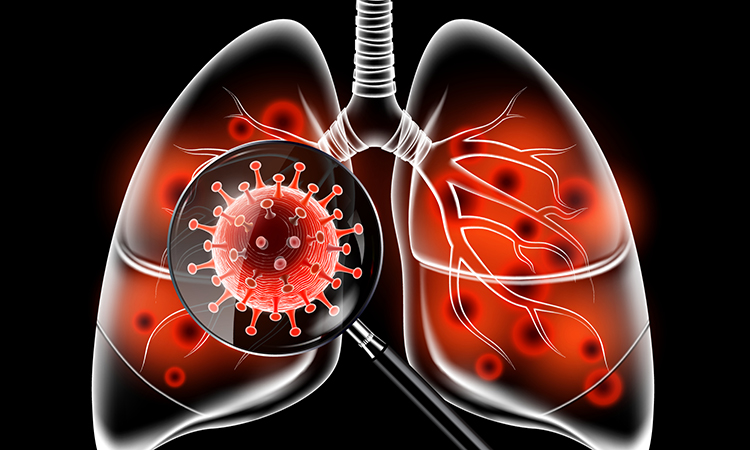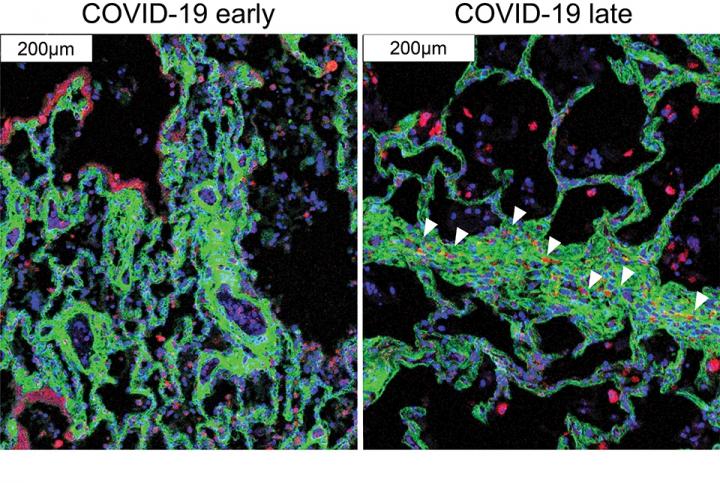Novel technique provides detailed map of lung pathology in COVID-19
Posted: 30 March 2021 | Victoria Rees (Drug Target Review) | No comments yet
Researchers have used imaging mass cytometry to analyse the cellular landscape of diseased lung tissue in severe COVID-19, revealing insights into the disease.


A team has used advanced technology and analytics to map, at single-cell resolution, the cellular landscape of diseased lung tissue in severe COVID-19 and other infectious lung diseases. The research was conducted by scientists at Weill Cornell Medicine and NewYork-Presbyterian, both US.
The researchers imaged autopsied lung tissue in a way that simultaneously highlighted dozens of molecular markers on cells. Analysing these data using novel analytical tools revealed new insights into the causes of damage in these lung illnesses.
“COVID-19 is a complex disease and we still do not understand exactly what it does to a lot of organs, but with this study we were able to develop a much clearer understanding of its effects on the lungs,” said co-senior author Professor Olivier Elemento, at Weill Cornell Medicine.
Traditional tissue analysis, often using chemical stains or tagged antibodies that label different molecules on cells, can reveal important features of autopsied tissues. However, this approach is limited in the number of features it can mark simultaneously. It also usually does not allow detailed analyses of individual cells in tissues while retaining information about where the cells were in the tissue.
The main technology the investigators employed in the study, called imaging mass cytometry, largely overcomes those limitations. It uses a collection of metal-tagged antibodies that can simultaneously label up to several dozen molecular markers on cells within tissues. A special laser scans the labelled tissue sections, vaporising the metal tags and the metals’ distinct signatures are detected and correlated with the laser position. The technique essentially maps precisely where cells are in the sample as well as each cell’s surface receptors and other important identifying markers. Altogether over 650,000 cells were analysed.


Immune cells (red) migrate near the cells that cause fibrosis (green) in late COVID-19 [credit: André Rendeiro].
The researchers applied the method to 19 lung tissue samples autopsied from patients who had died of severe COVID-19, acute bacterial pneumonia or bacterial or influenza-related acute respiratory distress syndrome, plus four lung tissue samples autopsied from people who had had no lung disease.
According to the researchers, the findings in samples from COVID-19 cases were broadly consistent with what is known about the disease, but clarified this knowledge in much finer detail. They showed that alveolar epithelial cells, which mediate the lungs’ gas-exchange function, are the main targets of infection by SARS-CoV-2. The analysis suggested that these infected cells are not solely singled out for attack by lung-infiltrating immune cells, which may help explain why inflammation often keeps worsening in severe COVID-19 and ends up causing such extensive and relatively indiscriminate damage.
One surprise for the team was that age and sex, two major factors in mortality risk for COVID-19, made no apparent difference at the histologic level, once COVID-19 had progressed to the severe stage.
The results also showed that macrophages are much more abundant in the lungs of severe COVID-19 patients compared to other lung diseases, whereas neutrophils are most prevalent in bacterial pneumonia – a distinction that may be relevant to the development of future treatments for these infectious diseases.
Overall, the researchers say the study provides a fine-grained picture of the disease process in COVID-19 and how it differs from other infectious lung diseases. It has prompted new research questions that are now being investigated and includes a wealth of observations that would not have been possible with standard pathology techniques.
“The application of technology like what we have demonstrated here is going to provide a huge boost to the utility of autopsy-based studies of disease,” said co-senior author Professor Alain Borczuk, at Weill Cornell Medicine and NewYork-Presbyterian.
The researchers emphasised that the technique not only will be applicable to a broad set of other diseases for which tissue can be obtained, but also should give scientists for the first time a practical method for delineating important differences within disease categories.
The study was published in Nature.
Related topics
Disease research, Imaging, Molecular Targets
Related conditions
Covid-19
Related organisations
NewYork-Presbyterian, Weill Cornell Medicine
Related people
Professor Alain Borczuk, Professor Olivier Elemento



